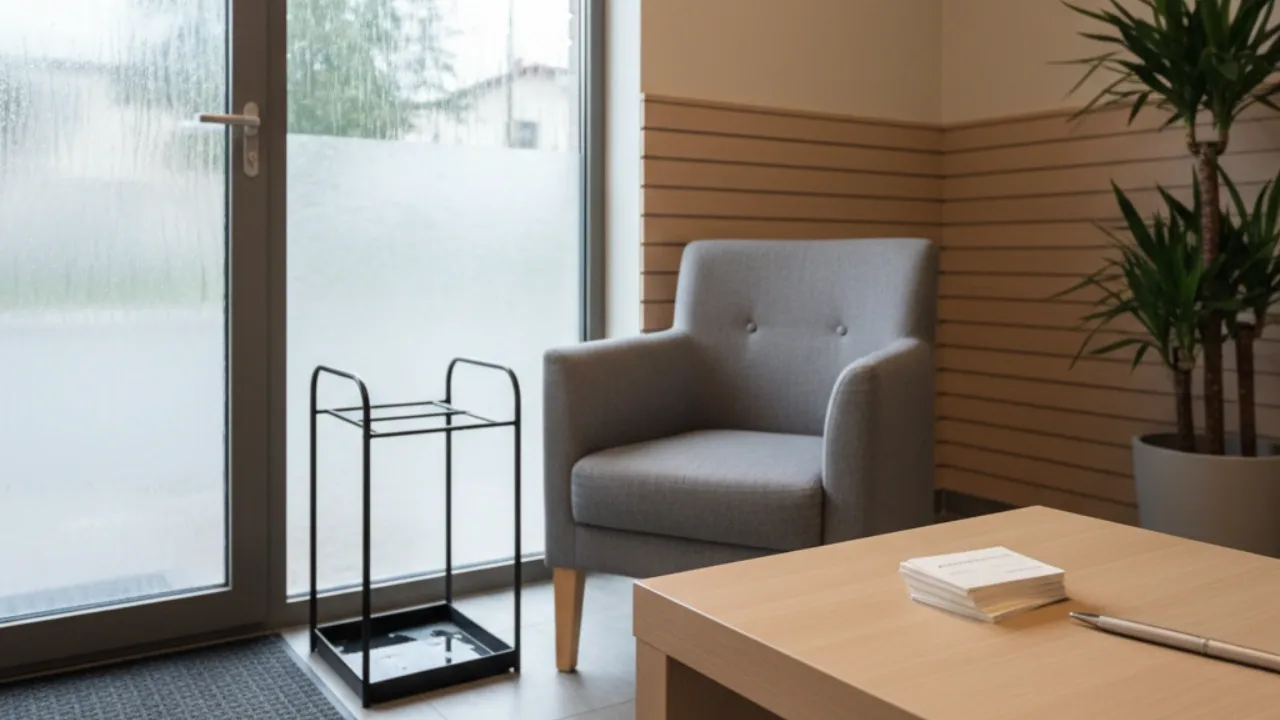
In the dynamic environment of medical clinics, every booked time slot represents an opportunity for care, revenue, and a stronger relationship with the patient. When a patient fails to show up without notice, that slot sits idle—causing financial loss, disrupting the schedule, and impacting the entire team’s productivity.
Although no-shows are common across clinics of different sizes and specialties, you can proactively minimize the problem. With clearly defined strategies, accessible technology, and coordinated work between the front desk, management, and clinical staff, a clinic can achieve significantly lower no-show rates.
In this article, we’ll explore how to prevent gaps in your schedule, offering practical guidance, relevant data points, and process suggestions you can apply in daily operations.
Before we continue, we need to ask: Are you already familiar with Ninsaúde Clinic? Ninsaúde Clinic is a medical software with an agile and complete schedule, electronic medical records with legal validity, teleconsultation, financial control and much more. Schedule a demonstration or try Ninsaúde Clinic right now!

Why Do Patients Miss Appointments? Understanding Behavior
Before implementing measures to reduce no-shows, it’s essential to understand the main reasons patients fail to attend. The most frequent include:
- Forgetting: the patient simply forgets the date or time.
- Last-minute changes: unexpected personal or work issues arise and there isn’t enough time to cancel.
- Disorganized personal calendar: patients who overbook themselves may prioritize another commitment.
- Negative past experiences: long waits, delays, or feeling disregarded can discourage a return.
- Hard to cancel or reschedule: limited contact channels or a lack of clear, patient-friendly rescheduling policies.
By mapping these factors, your clinic can respond more strategically and empathetically, adjusting internal processes to reduce absences and making it easier for patients to communicate changes.

The Real Impact of a No-Show
A missed appointment isn’t just an empty slot. Its effects ripple across the operation:
- Financial: revenue for that day drops with no warning and fixed costs remain.
- Operational: physician and care-team productivity takes a hit, creating idle time and rework.
- Patient experience: wait times for others can increase, and schedule predictability declines.
- Resource management: rooms, equipment, and supplies are prepared for a visit that doesn’t happen.
For clinics working with payers/insurers, the impact can be even greater, since there may be volume targets, authorization windows, or productivity-based reimbursement that depend on attendance.
High-Impact Strategies to Reduce No-Shows
The good news: most gaps can be prevented with straightforward actions. Below are strategies that consistently deliver strong results.
1) Proactive patient communication
Establish a reminder cadence at least 24 hours and 2 hours before the visit. Use multiple channels—text/SMS, WhatsApp (if applicable), email, and phone. Personalize with the patient’s name, date/time, location/telehealth link, and any prep instructions.
Example: “Hi Ana, this is a reminder of your appointment with Dr. Ricardo tomorrow at 10:00 AM. If you need to reschedule, please reply here or call us at (555) 123-4567.”
Tip: two-way reminders (that accept replies) perform better than one-way blasts.
2) Attendance confirmation
Don’t just remind—confirm. An automated reply system—“Reply 1 to confirm, 2 to reschedule”—helps you anticipate no-shows, open cancelled slots early, and backfill time with other patients. For high-risk time slots, add a quick phone confirmation.
3) Digital self-service scheduling and rescheduling
Patients value autonomy. Offer online booking and allow self-serve rescheduling with minimal friction and clear policies. When it’s easy to cancel or move an appointment, patients are more likely to give advance notice instead of simply not showing.
4) Active waitlist
Maintain a list of patients eager to move up. When a cancellation happens, the front desk can promptly contact someone from the waitlist (via SMS or WhatsApp) to fill the gap. Prioritize by urgency, clinical need, and patient availability.
5) Patient education and awareness
Communicate—kindly and transparently—the impact of no-shows. Do this in booking confirmations, in-office signage, and follow-up emails. Many patients don’t realize an empty slot affects other patients waiting for care and strains capacity.

6) Improve the care experience
Well-treated patients keep their commitments. Reduce wait times, give accurate ETAs, humanize interactions, and provide clear follow-up instructions. Loyalty begins with the first impression and is reinforced every step of the journey.
7) Clear no-show policy
Set standards for late arrivals, reschedule limits, and fees for unjustified no-shows (as permitted by state law, payer contracts, and your clinic’s policy). Communicate the policy at booking, reinforce it in reminders, and display it on your website and patient portal. Offer reasonable exceptions for emergencies and access barriers.
Compliance note: ensure your notifications and record-keeping comply with privacy obligations (e.g., HIPAA). Avoid including sensitive details in reminder messages.
Metrics That Help You Monitor and Act
Tracking data is essential for prevention. Focus on:
- No-show rate: percentage of missed visits relative to total bookings; track overall and by specialty.
- High-risk time slots: identify days/shifts with higher no-show incidence (e.g., late afternoons or Mondays).
- Most-affected specialties/services: tailor playbooks by service line (e.g., prep-heavy procedures may need extra reminders).
- Repeat no-shows: flag patients with patterns to enable targeted outreach, deposits, or additional confirmations when appropriate.
Review these metrics monthly, discuss findings in brief huddles, and document which countermeasures you’ll test for the next cycle.
How to Engage the Team
Preventing no-shows isn’t just the front desk’s job. Engaging the whole team is critical:
- Front desk: handles outreach, logs confirmations in the system, and keeps contact data up to date.
- Clinicians: reinforce continuity of care, explain the clinical consequences of missed follow-ups, and offer clear next-step instructions.
- Managers: track metrics, refine processes, align staffing to demand patterns, and support ongoing training.
Fostering a culture that respects time—both the clinic’s and the patient’s—makes operations more cohesive and efficient.

Technology as Support—Not a Crutch
Practice-management and patient-engagement systems are key allies. The ideal is for technology to enable, not replace, human connection.
Features like automated reminders, two-way confirmations, no-show and cancellation reports, and integration with online scheduling/telehealth are highly effective at prevention. They save staff time and enable quick responses to last-minute changes.
Still, the true differentiator is how your team uses these tools: with personalization, empathy, and a clear focus on delivering the best possible patient experience.
Implementation tip: standardize templates, timing, and scripts; A/B test subject lines and message length; and monitor opt-out rates to keep engagement high.
Real-World Wins in Schedule Management
Clinics that adopt these strategies report meaningful gains:
- Up to 60% reduction in no-shows after implementing reminders with automatic confirmation.
- Reorganizing low-adherence time slots based on data analysis (e.g., shifting certain services away from historically weak periods).
- Improved patient perception of service quality and communication.
- Higher provider productivity without adding headcount.
For example, an orthopedics clinic in Medellín reported that after three months using automated confirmations and an active waitlist, it reduced no-shows by 48% and backfilled 30% of cancelled slots with standby patients—turning idle time into productive care.
These wins show it’s possible to transform a chronic problem into an opportunity for growth and better access.
Turning Your Schedule into a Strategic Asset
Preventing gaps in the schedule goes far beyond filling time—it protects financial sustainability, team well-being, and care quality. Every efficiently filled slot means less stress, better results, and more satisfaction for everyone involved.
If your clinic aims to move in this direction, start by reviewing current processes and setting clear reduction targets for no-shows. Then invest in humanized communication, responsible digitalization, and team training aligned with that goal.
By professionalizing appointment management and building transparent relationships with patients, you can turn your schedule into a high-value strategic asset—one that consistently supports access to care, patient satisfaction, and a healthier bottom line.
Liked the information? Then prepare for a continuous journey of knowledge by following our blog. Are you a health professional and not yet familiar with the benefits of Ninsaúde Clinic? Stay ahead, optimize your processes, and elevate excellence in patient care!

